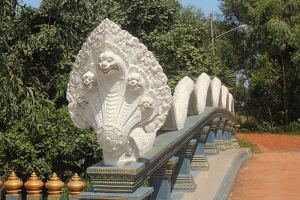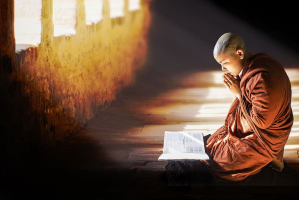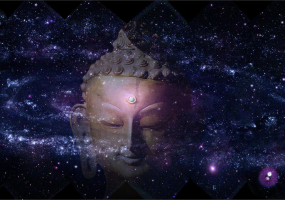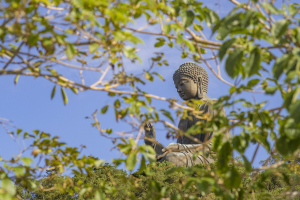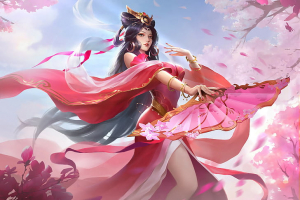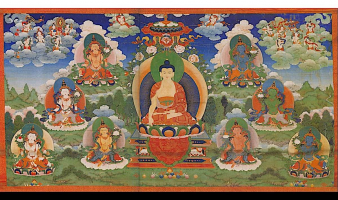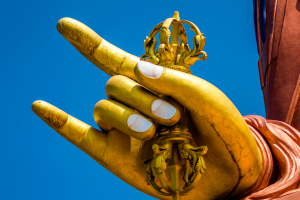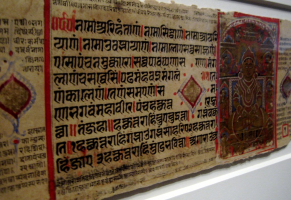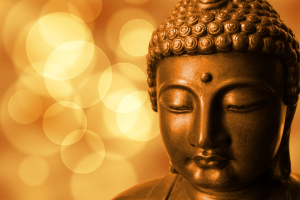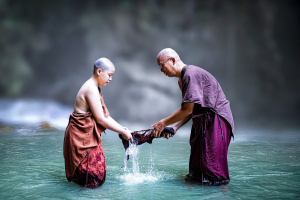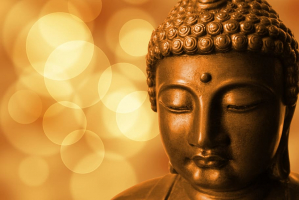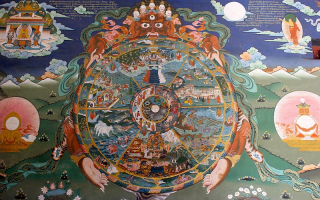Top 10 Most Popular Female Deities in Buddhism
In the expansive realm of Buddhist spirituality, specific luminous figures emerge as beacons of devotion and inspiration. Among these cherished entities, the ... read more...ten most popular female deities in Buddhism hold a special place within the hearts of practitioners.
-
Yakshinis are significant figures in certain forms of Buddhist and Hindu traditions. Yakshinis are mythological beings often depicted as female spirits or goddesses with mystical powers. In Buddhism, they are sometimes considered protective deities or attendants of certain Buddha figures. Often portrayed as guardian spirits or devoted attendants within the Buddhist pantheon, they embody protective and benevolent aspects, extending guidance and support to dedicated practitioners.
These mystical entities symbolize various natural, fertile, and supernatural forces. Yakshinis occupy a distinct position in tantric practices, invoked to lend their energies to rituals and meditations that propel spiritual growth and catalyze transformative metamorphosis. Their essence embodies the dynamic vitality of feminine power, accentuating virtues encompassing strength, wisdom, and compassion.
Yakshinis become integral threads in Buddhist folklore. Some interpretations cast them as evocative symbols of the transformative odyssey from ignorance to enlightenment, embodying the latent potential for profound inner evolution and self-realization.
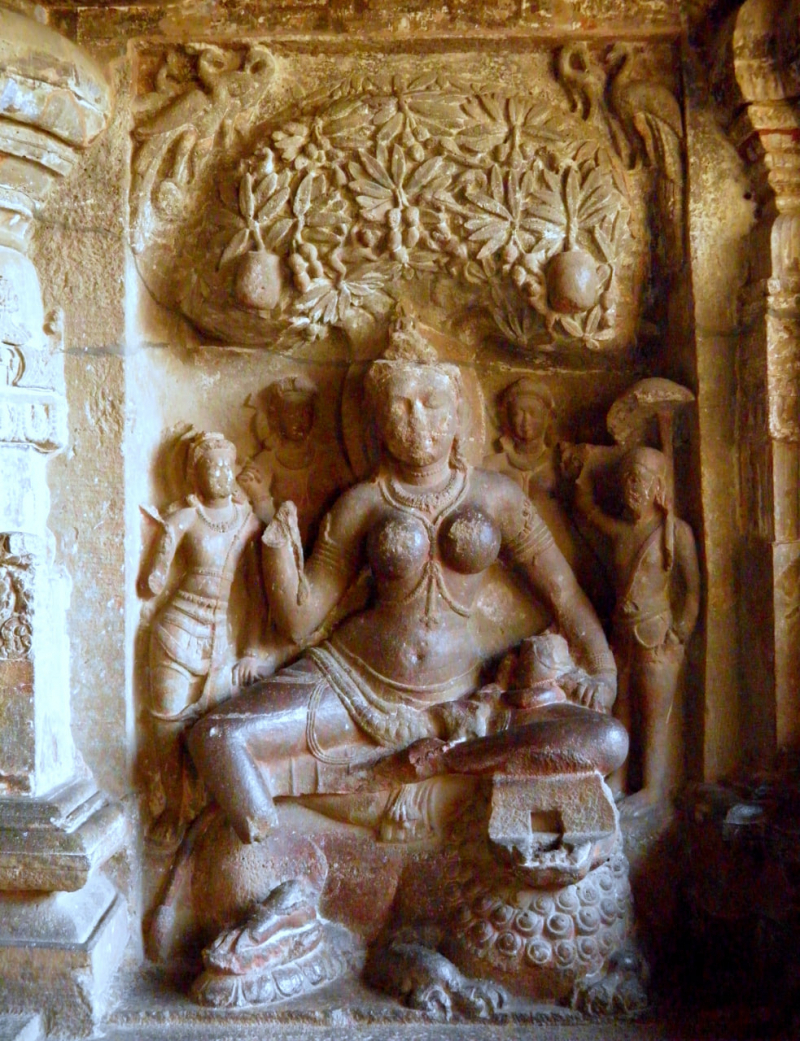
Photo on Wikimedia Commons (https://commons.wikimedia.org/wiki/File:Siddhaika_Yakshini_%28goddess_of_fertility%29_Ellora_Cave_32.jpg) 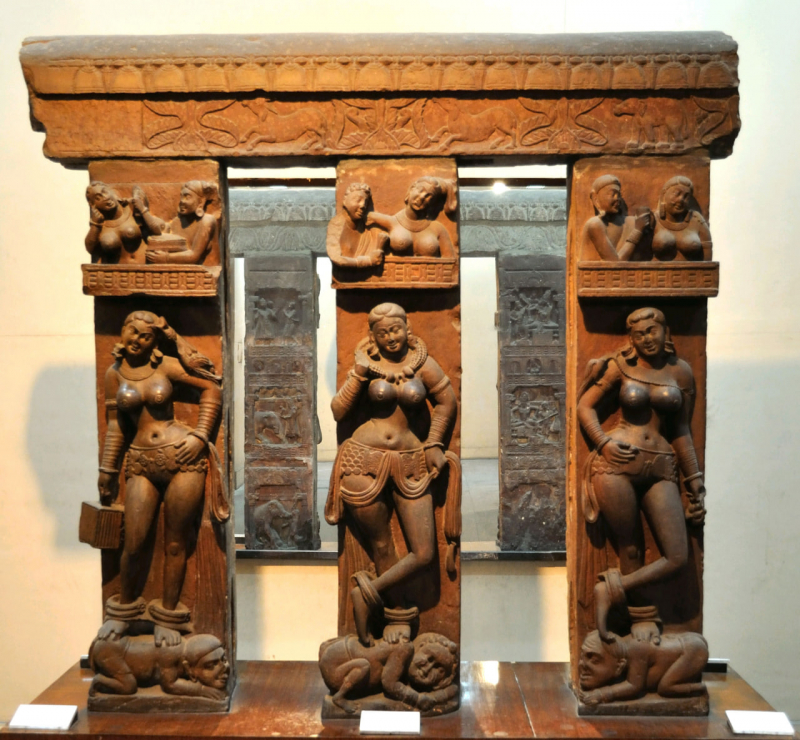
Photo on Wikimedia Commons (https://commons.wikimedia.org/wiki/File:Bhutesvara_Yakshis_Mathura_reliefs_2nd_century_CE_front.jpg) -
White Tara, referred to as "Sitatara," holds a position of profound reverence and widespread recognition within Buddhism. She is portrayed as an embodiment of compassion, serenity, and wisdom and resonates with devotees seeking solace and guidance.
Her elegant form typically depicts a serene figure with a complexion as pure as driven snow. In a meditative pose, she extends her right hand in a gesture of generosity while her left-hand cradles a delicate lotus flower, signifying her perpetual readiness to guide and aid sentient beings.
White Tara's essence is intricately intertwined with compassion and curative energies. She is a beacon of hope, believed to offer safeguarding from physical ailments and spiritual afflictions. Invoking her name often invokes blessings of longevity, well-being, and vitality. The sacred mantra that resonates with White Tara's presence is "Om Tare Tuttare Ture Mama Ayur Punye Jnana Pushtim Kuru Svaha." Uttered for diverse purposes, this mantra seeks protection, healing, and the augmentation of positive attributes.
In select portrayals, White Tara aligns with the "Eight Aspects of Longevity," encompassing bodily and spiritual well-being facets. These aspects manifest through eight distinct Taras, each symbolic of a particular part of longevity. White Tara exemplifies nurturing guardianship and fortification, establishing her as a revered and influential figure in Buddhist devotion and practice.
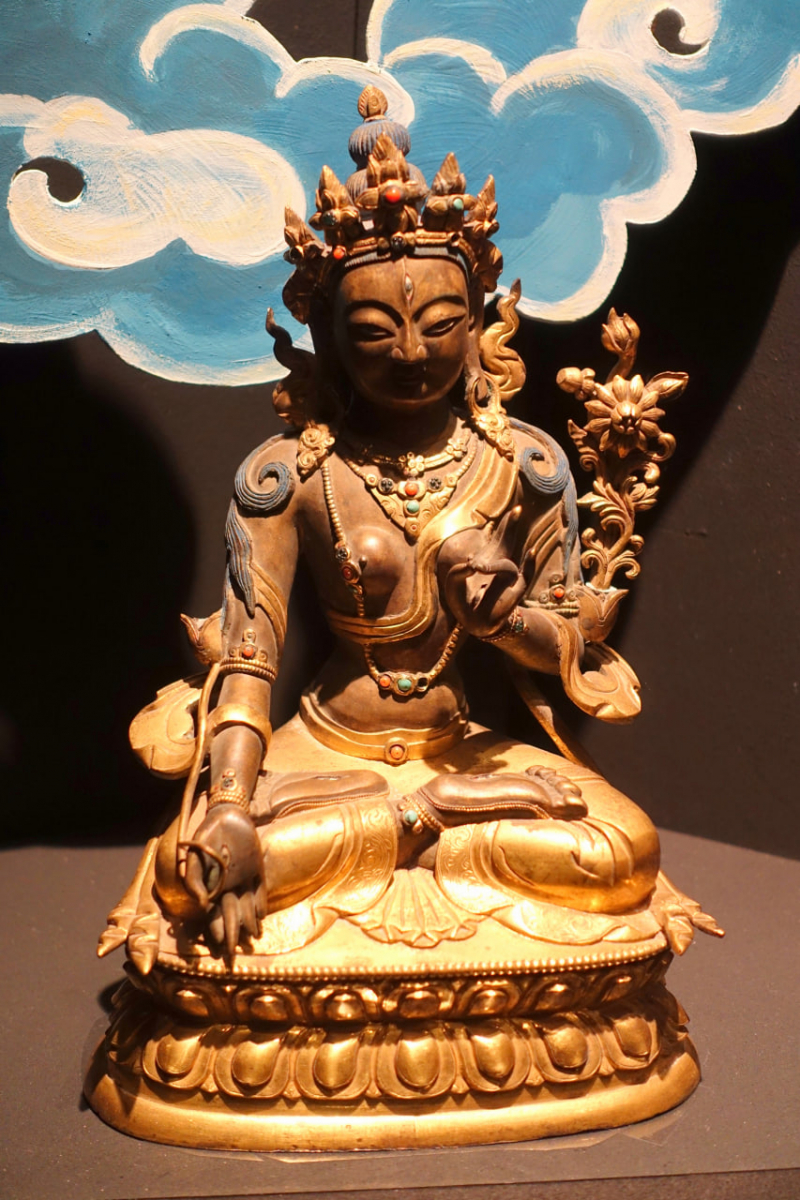
Photo on Wikimedia Commons (https://commons.wikimedia.org/wiki/File:White_Tara_%28Sitatara%29,_origin_unidentified_-_Etnografiska_museet_-_Stockholm,_Sweden_-_DSC01383.JPG) 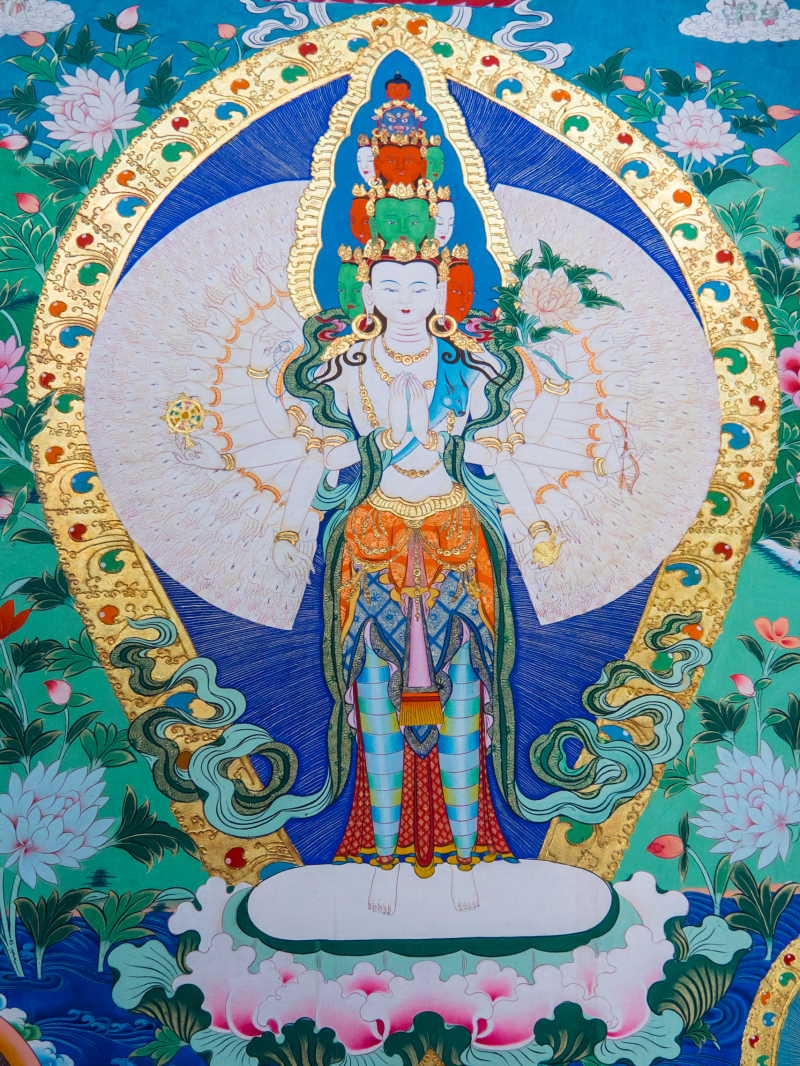
Photo on flickr (https://www.flickr.com/photos/rietje/23526412460) -
Green Tara is distinguished and revered among Buddhist deities, particularly in Tibetan Buddhism and other Mahayana traditions. Her significance is deeply rooted in enlightened activity, specifically in compassionate action. She embodies the dynamic facet of compassion, extending aid to individuals navigating both worldly tribulations and their spiritual quests.
Shyama Tara, distinguished by her hue, also assumes the mantle of the forest goddess. Her dominion extends over the earth, flora, and the wind. Poised atop a lotus throne cradled by two majestic lions, she finds her place beside Avalokitesvara, often with her right leg gracefully extended—a testament to her immediate responsiveness to those invoking her aid.
The portrayal of Green Tara frequently captures her right hand gesturing in a benevolent bestowal. In contrast, her left hand delicately clasps the stem of a lotus, a blossoming bloom gracing its side. Often, she is accompanied by the Eight Taras, each a symbol of conquering a distinct fear.
Myths envelop Green Tara, recounting her vow to be continually reborn as a female entity. This unwavering commitment serves her mission of empowering beings until they attain enlightenment. Green Tara's revered status flourishes as a compassionate and safeguarding force, harmonizing with her embodiment of active compassion. This amalgamation enshrines her as an adored and influential figure within the spiritual devotion and practices of countless adherents, particularly within the Vajrayana tradition.
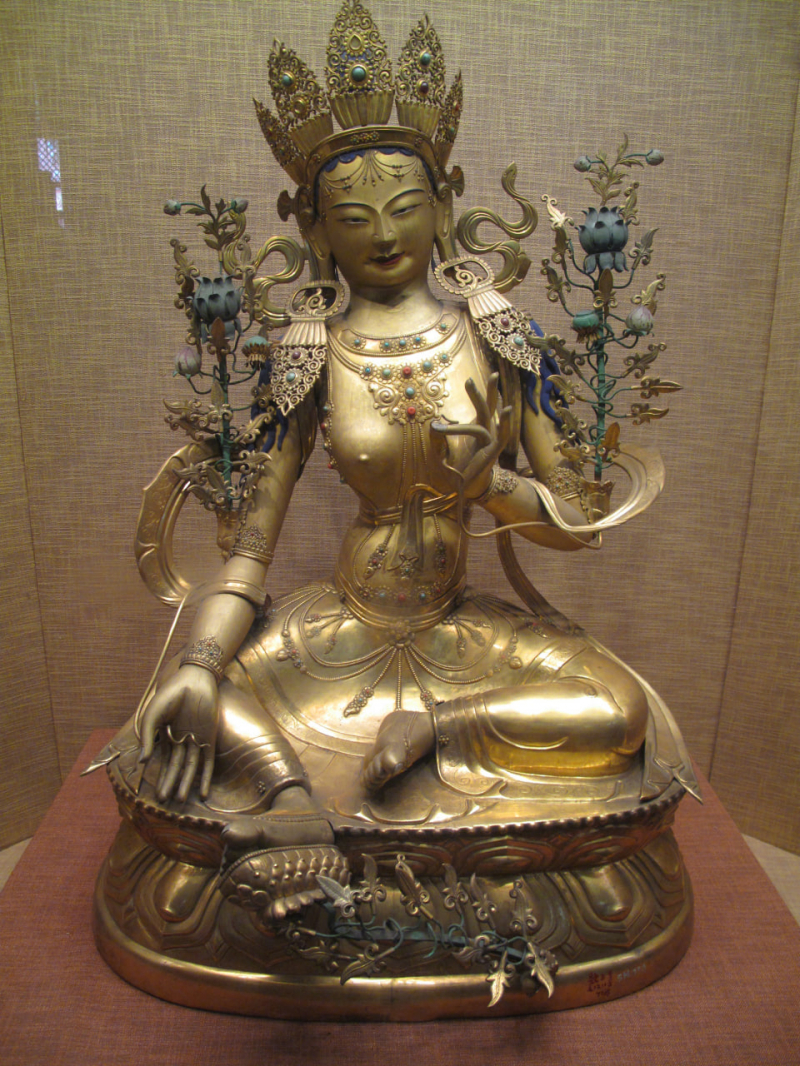
Photo on Wikimedia Commons (https://commons.wikimedia.org/wiki/File:Beijing_2009-1019.jpg) 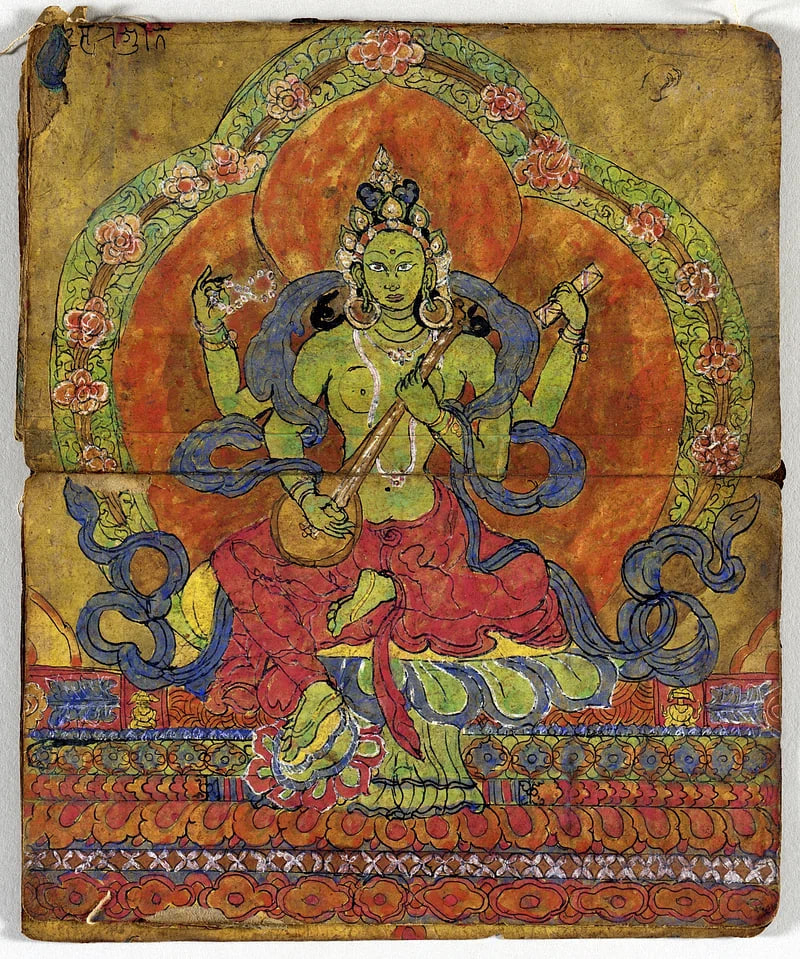
Photo on Rawpixel -
Yellow Tara (Bhrikuti Tara) is a significant female deity in Buddhist traditions, particularly Vajrayana Buddhism. She embodies various qualities and attributes, often associated with wealth, abundance, and prosperity.
Yellow Tara is often depicted with a golden or yellow complexion, radiating a sense of richness and luxury. Adorned with the presence of Amoghasiddhi in her crown, she stands portrayed with a pair of hands. Immortal in her youthful visage and adorned with shining jewels, she gracefully forms the varada mudra with her right hand while cradling a delicate blue utpala blossom on her left.
Devotees seek her blessings for material and spiritual affluence, including cultivating positive qualities and virtues. In some interpretations, Yellow Tara's blessings are believed to bring physical well-being and alleviate ailments.
In certain Buddhist cultures, Yellow Tara is also viewed as a form of the goddess of wealth and abundance. She is believed to swiftly respond to the needs and aspirations of practitioners, especially in matters related to wealth and prosperity. This makes her essential in rituals and practices focused on attaining material and financial well-being.
It's important to note that interpretations and practices related to Yellow Tara can vary among different Buddhist lineages and cultural contexts. While not as widely known as some other Tara forms, Yellow Tara holds a distinct place within the spectrum of female deities in Buddhism, particularly for those seeking blessings of prosperity and abundance.
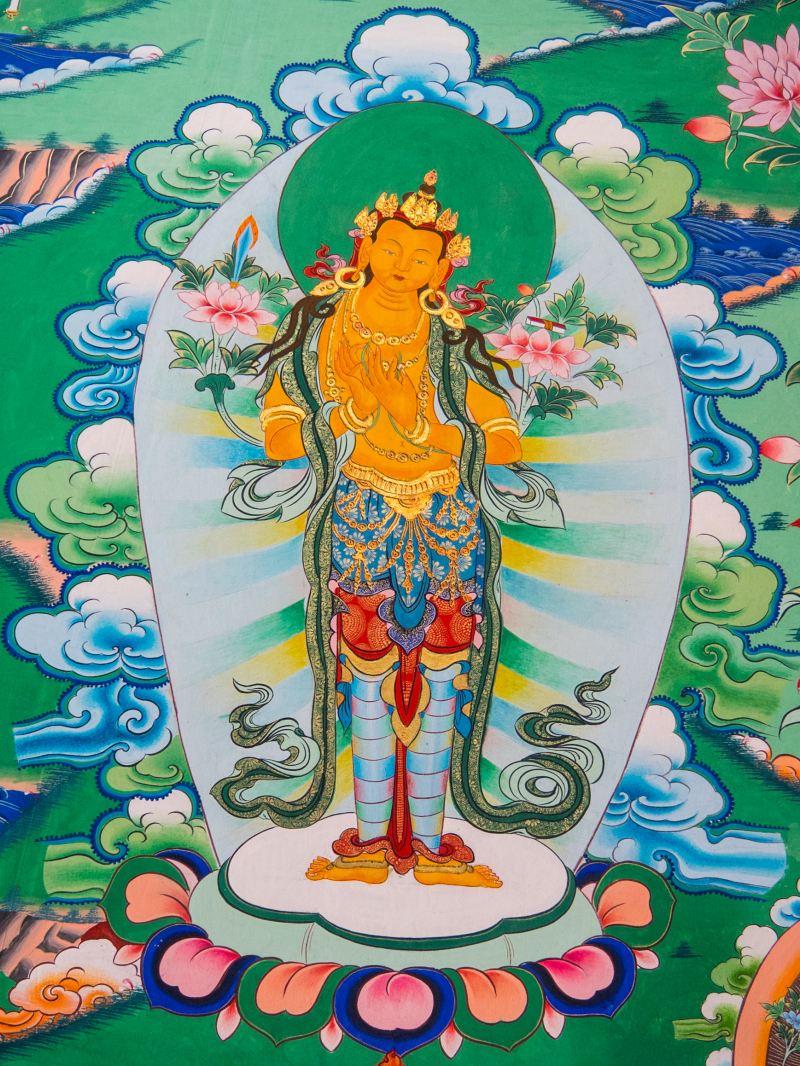
Photo on flickr (https://www.flickr.com/photos/rietje/23702716042/in/photostream/) 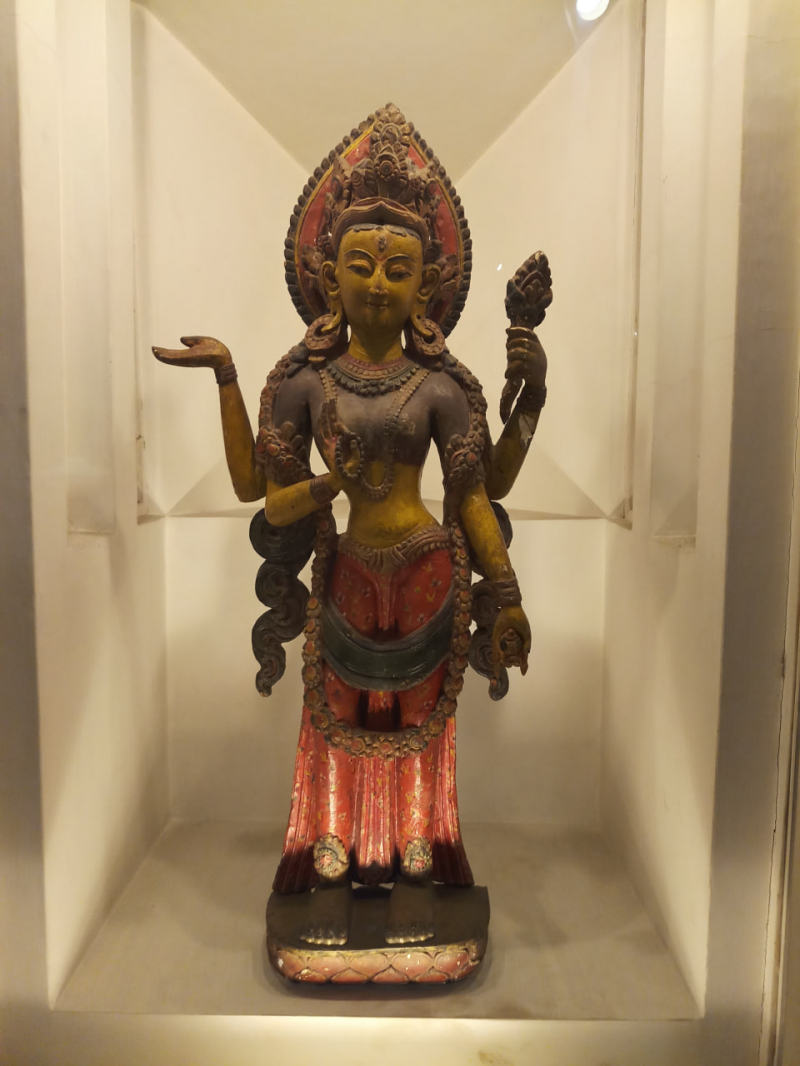
Photo on Wikimedia Commons (https://commons.wikimedia.org/wiki/File:Statue_of_Bhrikuti,_Patan_Museum,_Patan_Durbar_Square.jpg) -
Ekajata Tara (Blue Tara) is a noteworthy female deity within various Buddhist traditions, particularly in Tibetan Buddhism. Her essence resonates closely with wisdom, knowledge, and the alchemical shift of adversity into positive outcomes, epitomizing the vigor of swift and profound insight that guides devotees through life's challenges.
A signature feature of Ekajata Tara is her vivid azure complexion, setting her apart from other Tara manifestations. This radiant hue serves as an emblem of transformative wisdom and spiritual enlightenment. Adorned with six arms, each cradling symbolic elements, she emerges from Buddhist tantric texts as a petite figure in an archer's stance. Three eyes grace her visage, accompanied by a prominent belly, a protruding tongue, and fiercely intense red round eyes.
Ekajata Tara's aura of protection envelops practitioners, safeguarding them from harm and fear. Her unwavering resolve brings swift and audacious intervention during moments of distress. Additionally, Blue Tara is linked to averting eight specific perils, encompassing an array of physical and spiritual threats. As a compassionate guardian against these hazards, she extends solace and guidance to those in need.
Intertwined with her nurturing and protective attributes, her multifaceted role as a beacon of wisdom and transformation firmly establishes Ekajata Tara as an esteemed and potent figure within the tapestry of Buddhist reverence and devotion. Her profound influence flourishes within the rich context of Vajrayana traditions, resonating as a guiding force in spiritual practice and dedication.
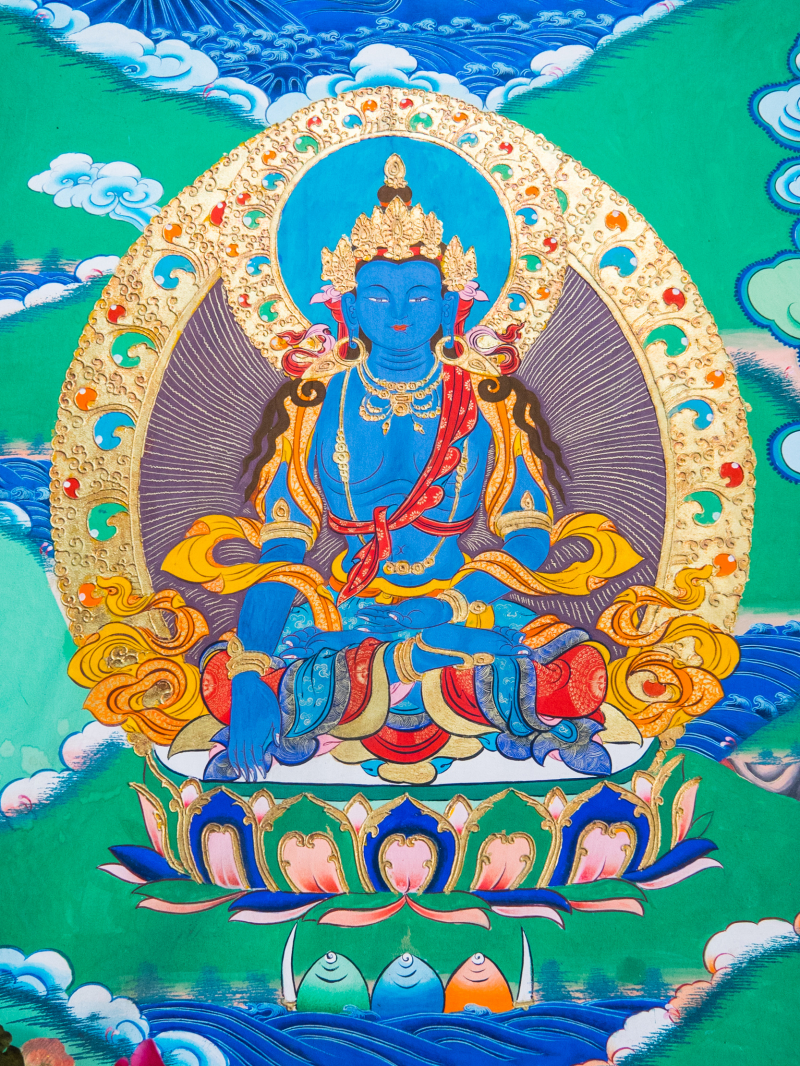
Photo on flickr (https://www.flickr.com/photos/rietje/23811145125) 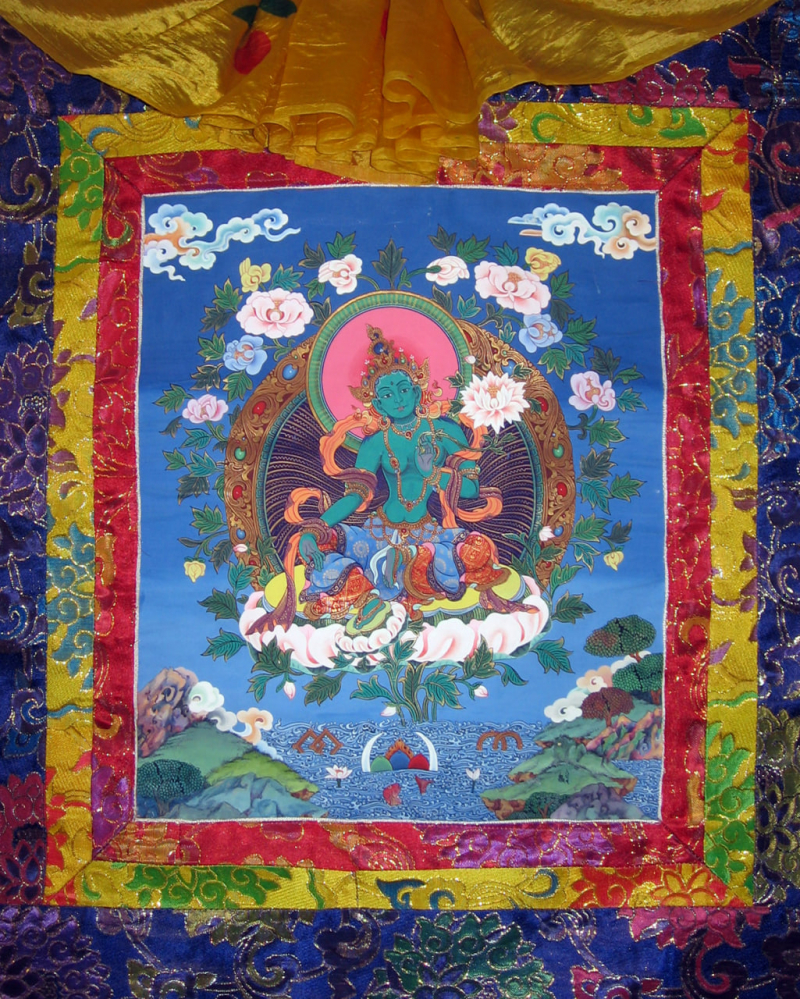
Photo on Wikimedia Commons (https://commons.wikimedia.org/wiki/File:Paubha_waumha_tara.jpg) -
Kurukulla Tara (Red Tara), an esteemed and commanding female deity across diverse Buddhist traditions, occupies a unique and potent realm within spiritual devotion. Renowned for her unwavering and genuine compassion, this facet of her nature propels her to address the challenges and afflictions confronting practitioners promptly.
The vivid crimson hue that envelops Kurukulla Tara's form serves as a graphic symbol of her formidable energy and transformative prowess. This radiant color embodies her capacity to effect profound shifts and liberation. She is often portrayed with six arms; Red Tara's multifarious hands grasp emblematic implements, each signifying different facets of her compassionate and protective essence.
Intimately intertwined with the currents of change and transformation, Kurukulla Tara is revered as a guide through transitions, empowering practitioners to harness such shifts as catalysts for personal growth. She stands as a living embodiment of dynamic and commanding feminine energy. Her compassionate ferocity and the agency she wields to initiate change serve as a testament to the profound strength inherent in the divine feminine.
Kurukulla Tara's legacy encompasses her role as a vanquisher of ego and negativity. Her transformative aura serves as a beacon for dispelling destructive patterns and surmounting obstacles along the spiritual journey.
The convergence of Kurukulla Tara's compassionate intensity and transformative might, melded with her embodiment of profound feminine energy, renders her a revered and influential figure within the tapestry of Buddhist devotion and practice. Especially exalted within Vajrayana traditions, the presence of Red Tara kindles a spirit of embracing change, navigating adversity, and nurturing the growth of profound spiritual insight.
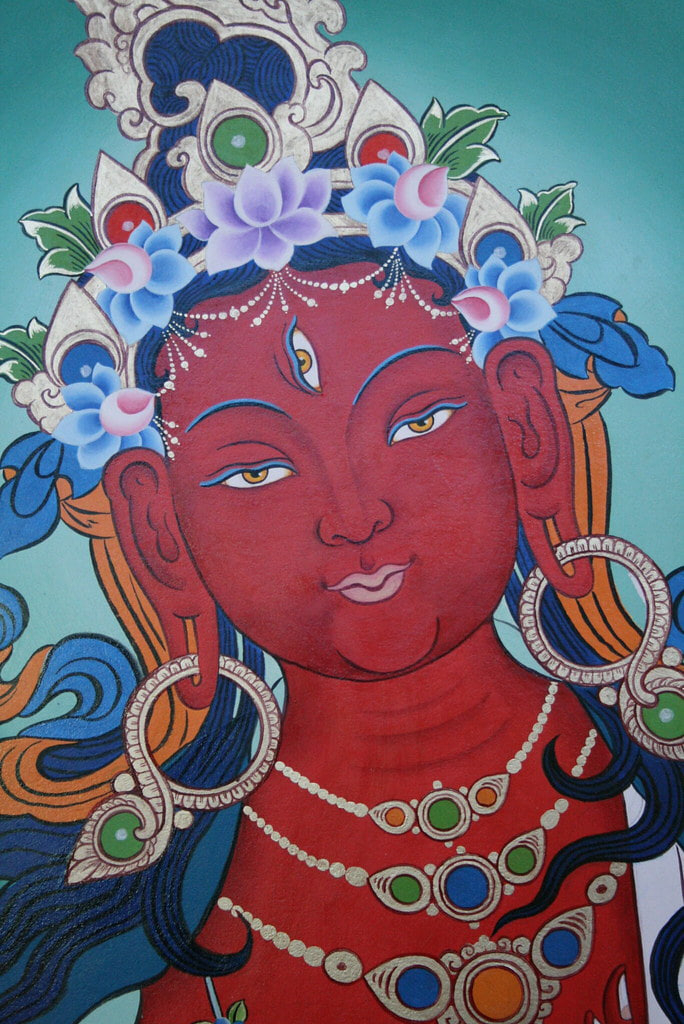
Photo on flickr (https://www.flickr.com/photos/cebb/3025763786) 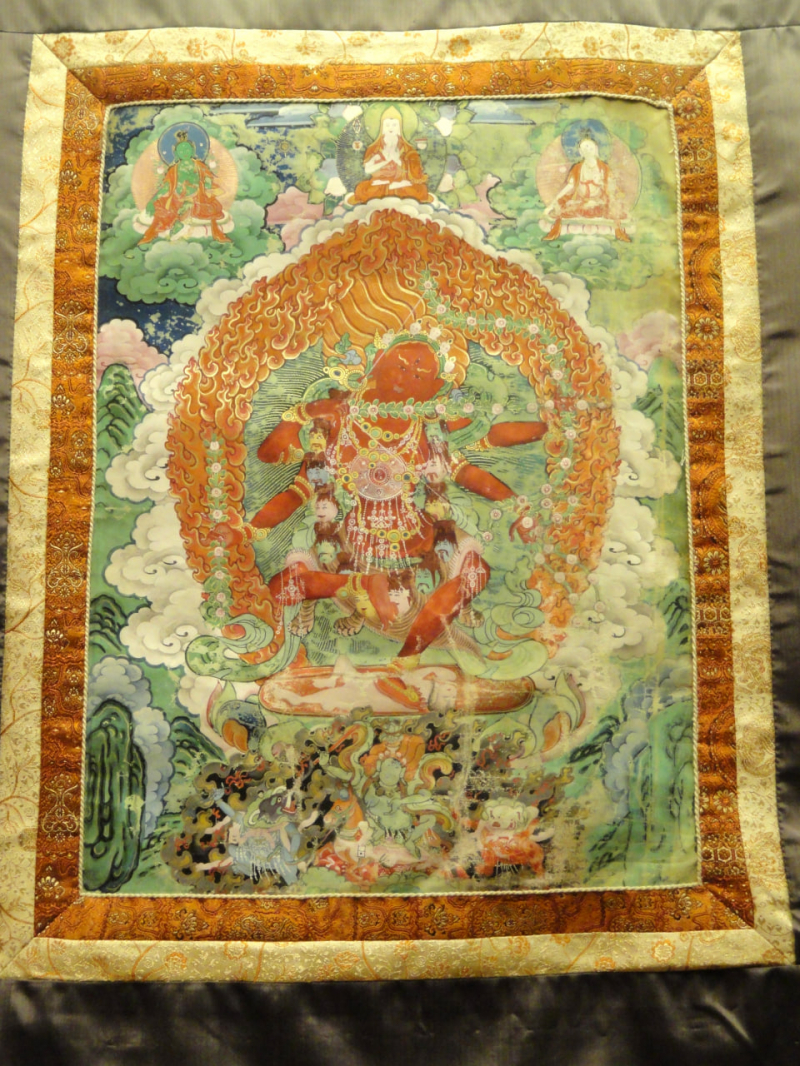
Photo on Wikimedia Commons (https://commons.wikimedia.org/wiki/File:Kurukulla_%28Red_Tara%29_-_AMNH_-_DSC06232.JPG) -
Vajrayogini is an eminent and venerated female deity within the tapestry of Vajrayana Buddhism. She embodies the union of wisdom and bliss, encapsulating the harmonious fusion of profound insight and joy. Her essence bridges intellectual understanding and experiential realization, forging a comprehensive path toward spiritual awakening.
Draped in a shining crimson radiance, Vajrayogini's vibrant hue mirrors her intense passion, exuberant energy, and dynamic approach to leading practitioners swiftly and forcefully along the path of enlightenment. She firmly clasps a ceremonial knife and a skull cup brimming with Mahasukha, the essence of ultimate bliss. The graceful curve of the blade serves as a symbol of her mastery, effortlessly severing all defilements that obstruct the journey toward spiritual purity.
Vajrayogini is often revered as a dakini or yogini, embodying the essence of feminine wisdom and serving as a guiding luminary for practitioners on the tantric journey. Her presence radiates enlightened energy, skillfully leading devotees through the intricate dance of emotions and thoughts, culminating in the elevation of awareness and the attainment of profound awakening.
The vibrant fusion of wisdom, bliss, and unyielding compassion within Vajrayogini crystallizes her as an esteemed and catalytic figure in Buddhist devotion and practice, especially within the rich tapestry of the Vajrayana tradition. Her presence kindles a profound voyage into desire, a graceful waltz with passions, and an empowered odyssey toward the radiant realms of spiritual illumination.
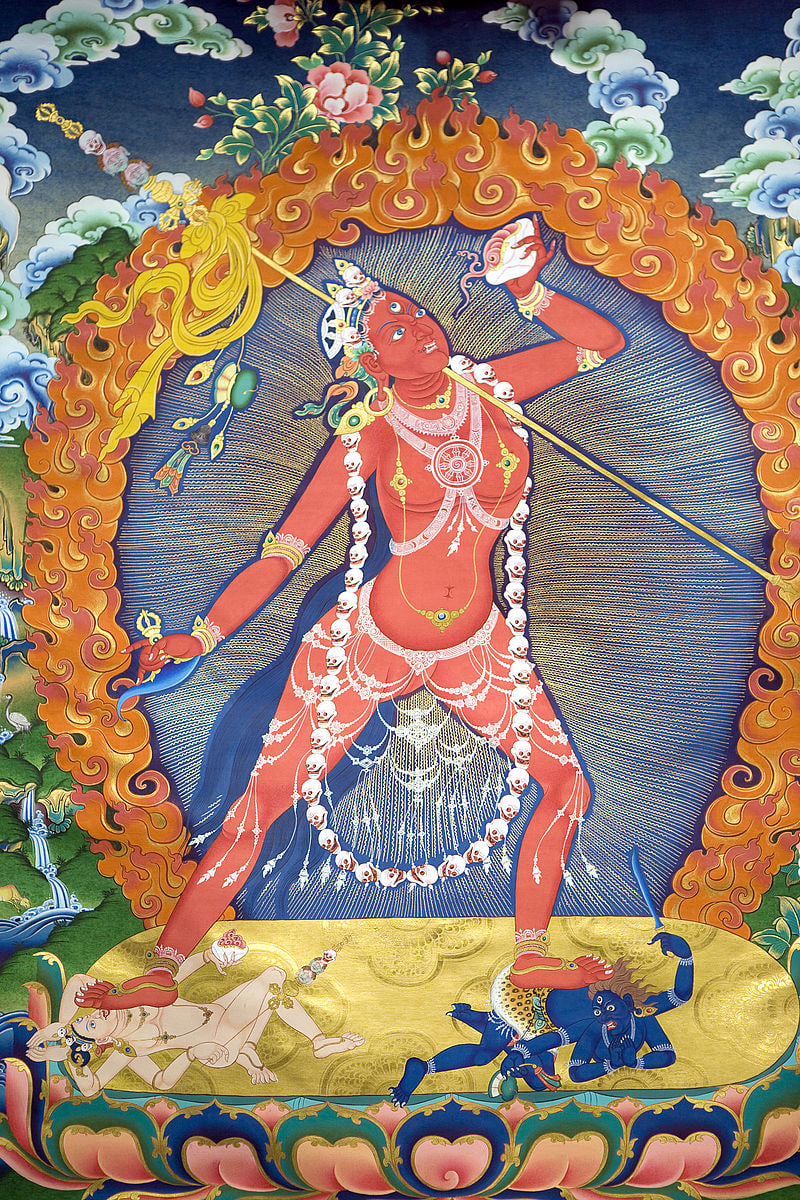
Photo on Wikimedia Commons (https://commons.wikimedia.org/wiki/File:Vajrayogini_en_Thangka_Tibetano.jpg) 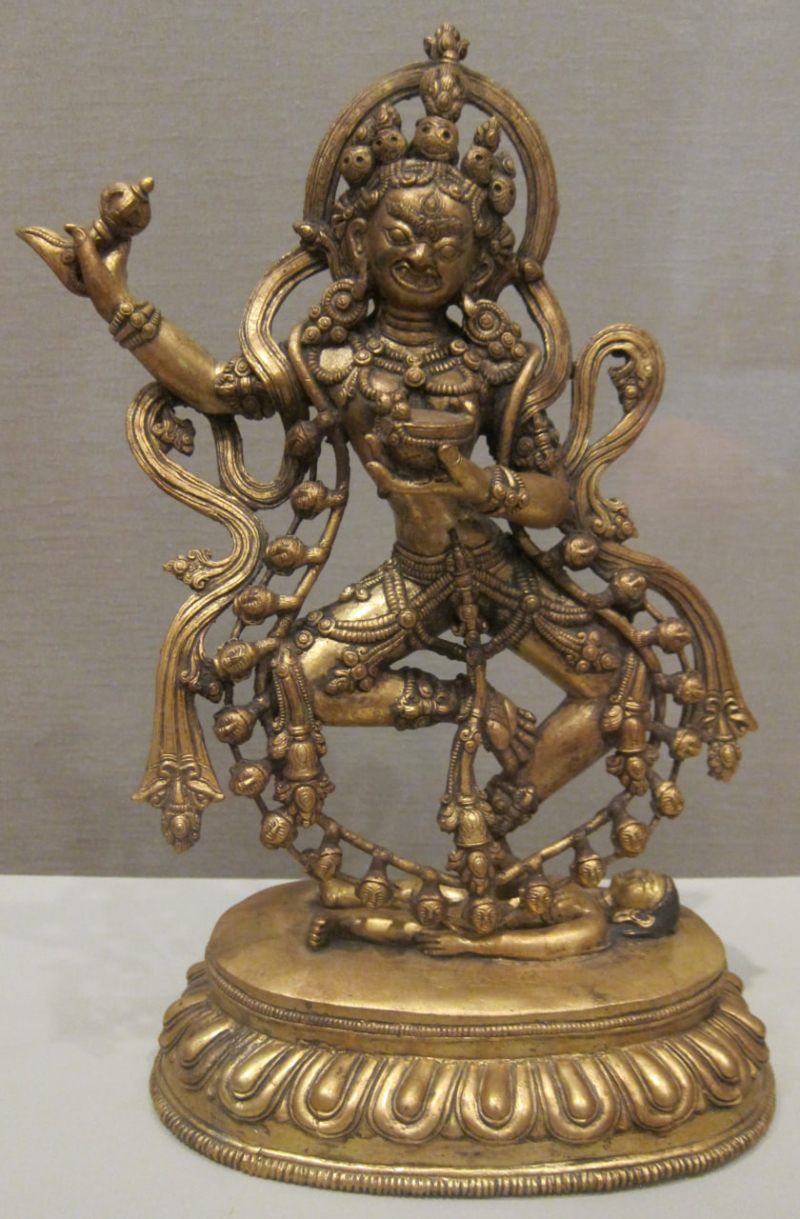
Photo on Wikimedia Commons (https://commons.wikimedia.org/wiki/File:Vajrayogini_statue_from_Nepal,_18th_century,_gilt_bronze,_Honolulu_Museum_of_Art.JPG) -
Chinnamasta is an intriguing and deeply resonant female deity in Buddhist and Hindu traditions. A vivid portrayal captures Chinnamasta as a captivating allure figure, clutching her severed head in one hand while her two attendants consume her life essence. This evocative tableau is a potent representation, conveying the transcendence of ego and the poignant sacrifice of self. It masterfully illustrates the profound journey toward selflessness and the liberating path of ultimate freedom.
Chinnamasta's depiction encapsulates the profound potency of spiritual practice in effecting transformation. Her self-offering is a symbolic embodiment of shedding the illusory self, a process that paves the way for unveiling the genuine essence of reality. Her bold act of self-decapitation emanates a relentless intensity, a testament to her unwavering resolve to sever attachments and dissolve delusions. This act, underscored by an uncompromising commitment, emphasizes the vital significance of slicing through the veils of illusion that tightly bind us to the relentless cycle of suffering.
Chinnamasta is pivotal in select tantric practices, where adherents immerse themselves in rituals and contemplative meditations to establish a profound connection with her transformative energies and summon her benevolent blessings. Her self-offering stands as a poignant testament, reminding all of the unwavering lengths to which enlightened entities extend themselves to alleviate suffering for the greater welfare of others.
Chinnamasta's representation as a decapitated deity, juxtaposing unyielding determination and compassionate surrender, unfurls as an emblematic cipher of the profound realities embedded within the tapestries of Buddhist and Hindu traditions. This portrayal, a fusion of potent forces, beckons practitioners to embark on deep journeys of self-transcendence.
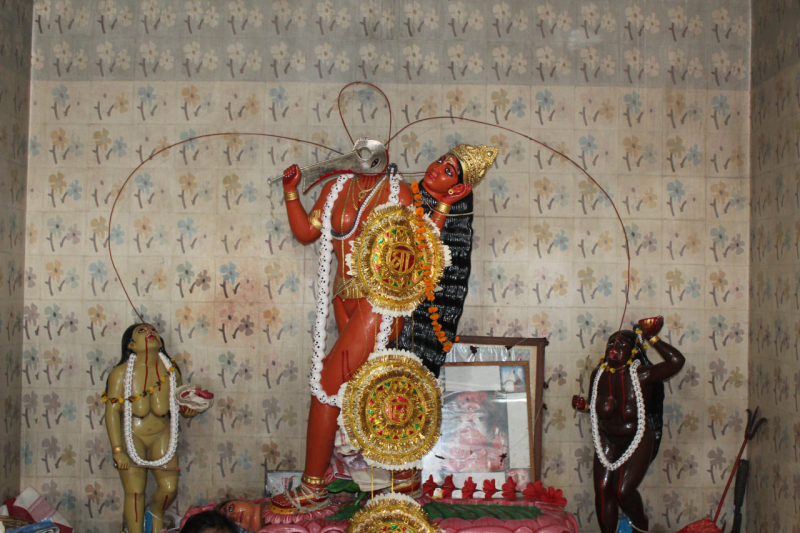
Photo on Wikimedia Commons (https://commons.wikimedia.org/wiki/File:Chinnamasta_temple_of_Bishnupur_10.jpg) 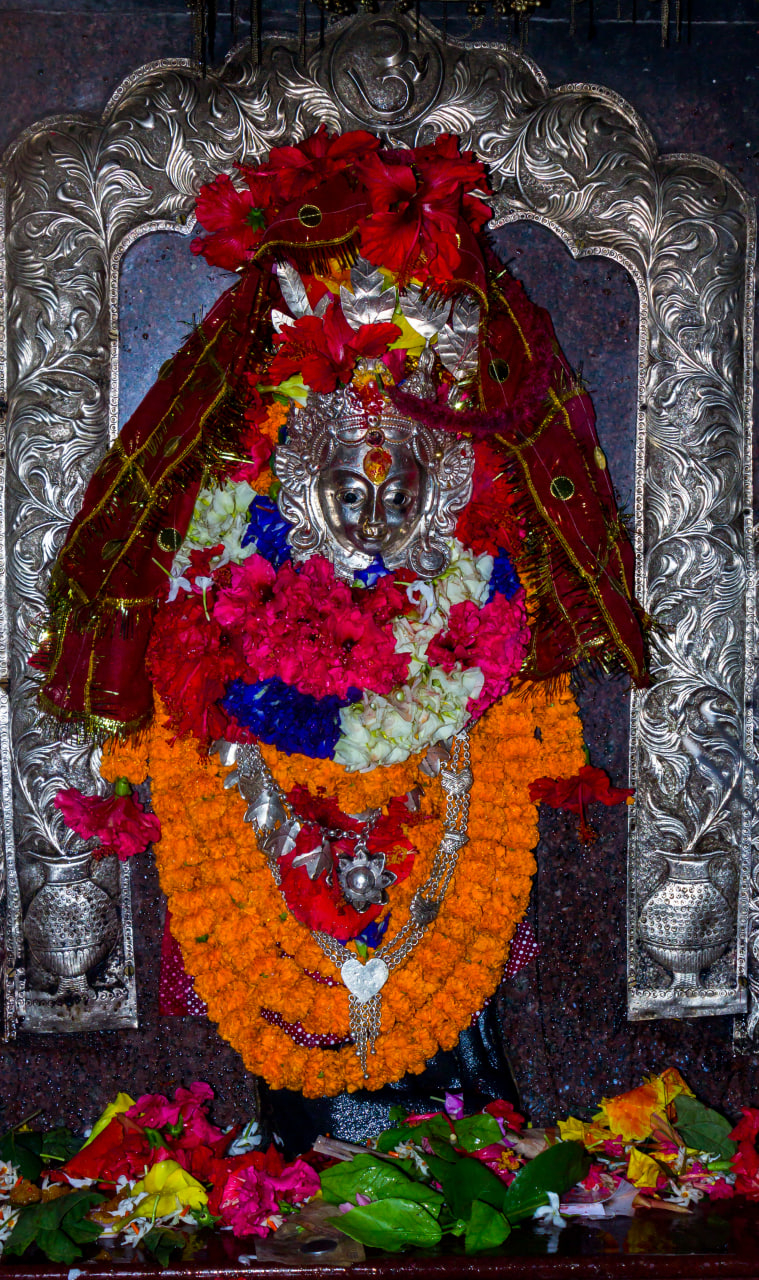
Photo on Wikimedia Commons (https://commons.wikimedia.org/wiki/File:Statue_of_chinnamasta_Bhagwati_%281%29.JPG) -
Prajnaparamita is a famous female deity in Buddhism. Revered for her embodiment of transcendent wisdom, she stands as a symbol of the zenith of insight that propels seekers toward enlightenment. Her very name, "Perfection of Wisdom," encapsulates her identity as the embodiment of profound understanding.
Her wisdom teachings find their sacred repository within the esteemed "Heart Sutra," a brief text that unveils the core of emptiness and the interconnected fabric of all phenomena. Often hailed as the "Mother of All Buddhas", Prajnaparamita's designation underscores her pivotal role in birthing the wisdom that serves as the conduit to Buddhahood. She emerges as the very fount from which enlightened knowledge flows.
Prajnaparamita's countenance varies, yet often she is depicted as a figure of serene dignity, clutching a book or scroll, symbolizing her teachings on wisdom. Her imagery weaves in symbols of emptiness and interdependence, affirming her profound grasp of reality's intricate tapestry. She embodies the essence of the bodhisattva ideal in her very being, radiating selfless compassion and an unwavering commitment to shepherd all sentient beings toward the dawn of awakening.
As an esteemed cornerstone within the tapestry of Buddhist thought, Prajnaparamita shines as the luminary of wisdom's brilliance. Her teachings, distilled within the Heart Sutra, serve as the compass guiding practitioners along the path of profound insight, fostering an understanding that transcends conventional boundaries and culminates in the ultimate realization of enlightenment.
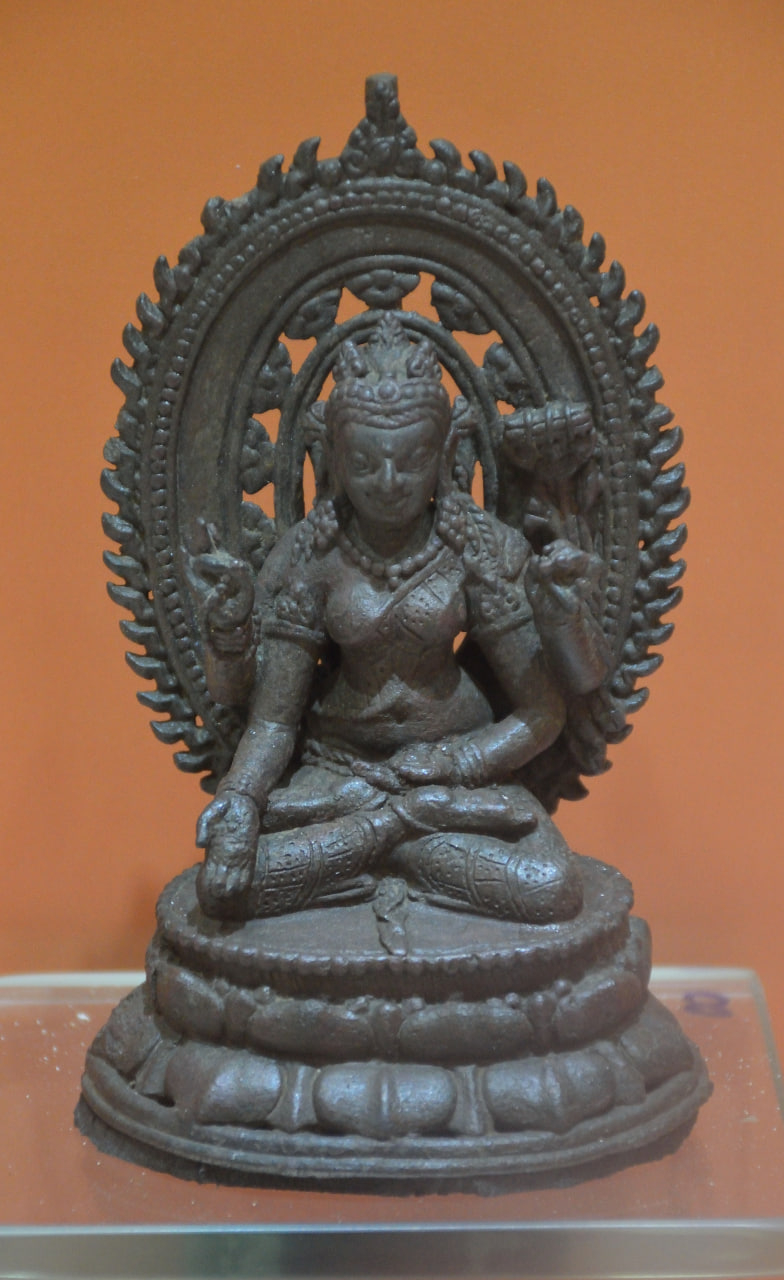
Photo on Wikimedia Commons (https://commons.wikimedia.org/wiki/File:Prajnaparamita_-_Bronze_-_ca_10th_Century_CE_-_Nalanda_-_ACCN_9430-A24285_-_Indian_Museum_-_Kolkata_2016-03-06_1732.JPG) 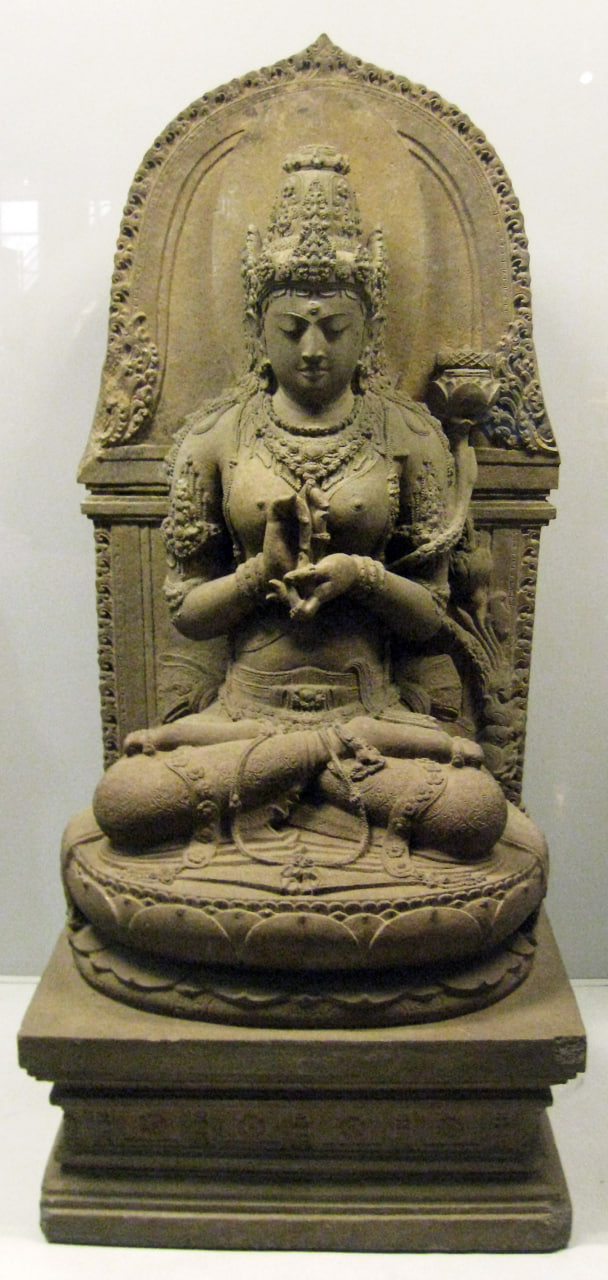
Photo on Wikimedia Commons (https://commons.wikimedia.org/wiki/File:Prajnaparamita_Java_Front.JPG) -
Palden Lhamo, or Remati, is a prominent female deity in Tibetan Buddhism. She is considered a wrathful protector and an influential figure in the Tibetan pantheon.
Palden Lhamo is often depicted riding a mule and wearing a crown made of human skulls, a staff made of a human spine, and riding a mule. Her ferocious appearance symbolizes her ability to destroy obstacles and protect practitioners from harm.
Palden Lhamo is particularly revered in the Gelugpa school of Tibetan Buddhism. She is considered one of the principal protectors of the Gelugpa tradition and is often invoked for help in overcoming obstacles and dispelling hostile forces.
In addition to her protective role, Palden Lhamo is also associated with the practice of Chöd, a unique form of meditation and ritual where practitioners symbolically offer their bodies to gain insight into the nature of reality and develop compassion.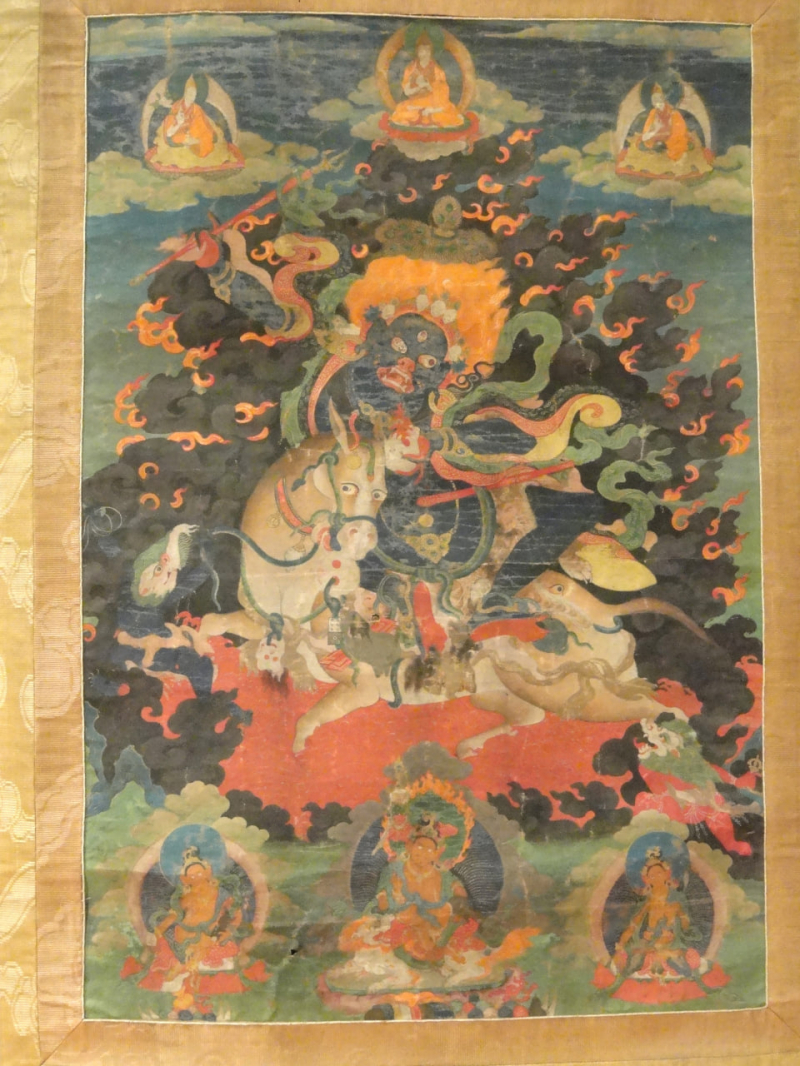
Photo on Wikimedia Commons (https://commons.wikimedia.org/wiki/File:Palden_Lhamo,_Lhasa,_Tibet,_18th_century_-_Royal_Ontario_Museum_-_DSC09681.JPG) 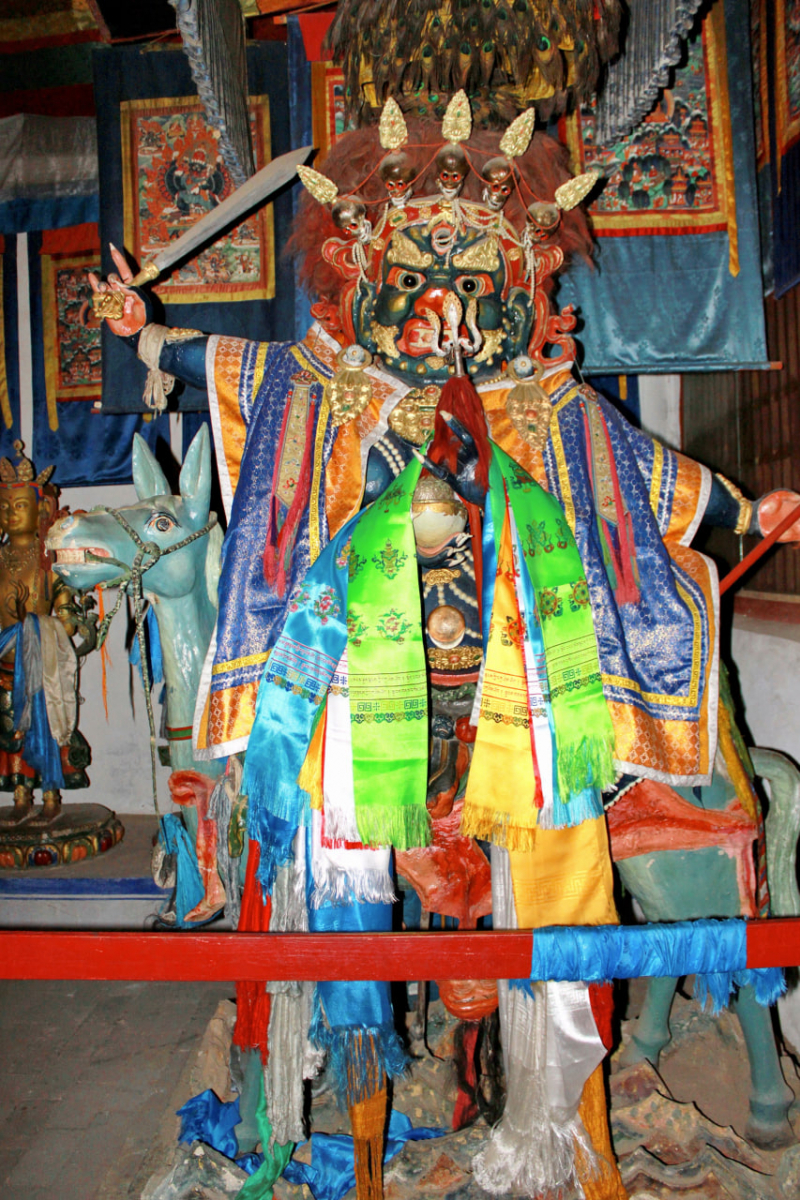
Photo on Wikimedia Commons (https://commons.wikimedia.org/wiki/File:Palden_Lhamo_w_G%C5%82%C3%B3wnej_%C5%9Awi%C4%85tyni_w_klasztorze_Erdene_Dzuu.jpg)













